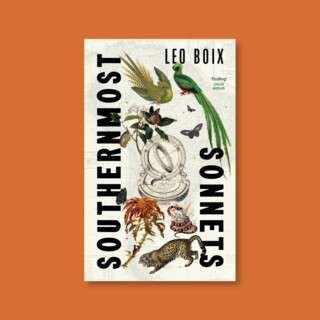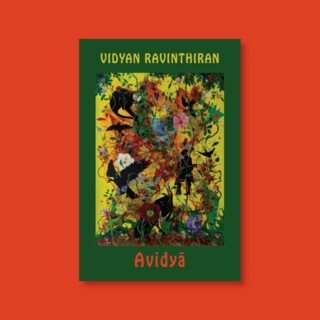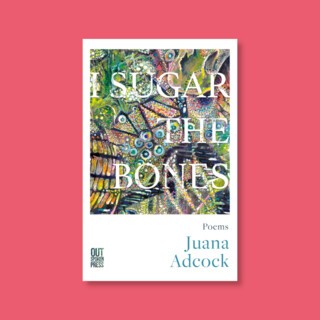‘Amphibian and Other Bodies’: a reading list
Posted by Vida Adamczewski

Vida Adamczewski’s Amphibian and Other Bodies is a feverish and wildly inventive first collection that brings together her award-winning lyric play Amphibian with eleven new short stories, published by Toothgrinder Press. You can read ‘Keeping Sheila’, a story from the collection, here, and below, Adamczewski explores some of the books that inspired her work.
Amphibian (adj) living both in water and on land. From the Ancient Greek ἀμφίβιος (amphíbios), meaning “both kinds of life”
An unwanted pregnancy completely changed the way I related to my body. My womb was occupied by a liminal creature, an amphibian. The stories in Amphibian and Other Bodies emerged from that experience. They all concern a form of inbetweenness. I have found it in pregnancy, but also in retail spaces, in pet shop queues, in adolescence, in desire, in meltwater and ponds. And you will find it in these books, where the human and animal, the real and imagined, the interior body and the outside world are blurred and twisted; nothing is in a stable state.
Everything Under by Daisy Johnson
As Gretel searches for her mother, whom she hasn’t seen for sixteen years, strange memories from her childhood are churned up of her mother’s moods, missing children and a haunting river monster called The Bonak. The undertow of the novel is its riddle-like quality, in which words are given second, third meanings and new language is created continuously. I still haven’t got to the bottom of this book, though I’ve read it several times. It is as fractal as the river itself.
Mrs Caliban by Rachel Ingalls
Reading Ingalls’ novella about a lonely housewife and her amphibious anthropoid lover Larry feels a bit like losing one’s mind. Ingalls’ acerbic wit makes middle class manners, supermarket staff, radio adverts and Dorothy’s thoughtless husband seem as uncanny as Larry himself, for all his froggy glory. I shiver with delight just thinking about it.
Day of the Triffids by John Wyndham
Wyndham is a genius inventor of monsters. The traits that make the triffids dangerous – their size, stingers and locomotion – are brilliantly plausible. They are not far from stinging or carnivorous plants, or the alleged walking palms in the Amazon. But what really makes them lethal? A sprinkle of hubristic farming and a breakdown in social order. Positively prophetic.
The Debutante and Other Stories by Leonora Carrington
Leonora Carrington was a torch-bearer for weird women. In her short stories, as in her art, she imagines glittering, chimeric characters, plucking body parts from humans, animals and machines. Her writing is frank and caustically funny. In ‘The Debutante’ a girl persuades a hyena to take her place at a ball. It is one of my favourite wolf-girl stories (a richly populated sub-genre including Karen Russell’s St Lucy’s Home for Girls Raised by Wolves and Angela Carter’s ‘Wolf-Alice’) and stunningly grisly.
An Account of the Decline of the Great Auk, According to One Who Saw It by Jessie Greengrass
Another exceptional short story collection traversing centuries and continents. Alongside the title tale, my favourite story in this collection is ‘Winter, 2058’, a haunting description of a woman losing her grip on reality. The cause of her deterioration is one of the most terrifying concepts I’ve ever encountered. Jessie Greengrass’s sentences are crisp and thrilling, unsettling in their forensic precision.
Larger than an Orange by Lucy Burns
Lucy Burns’ kaleidoscopic memoir is an unflinching record of the aftermath of her abortion. In pro-choice discourse, little room is afforded to the complex emotional reality of abortion for fear that it will be co-opted by anti-choice campaigns. We have to be braver, because shame and paranoia bloom in the dark. I was relieved to read Larger than an Orange; I felt less alone. If, like me, you loved Annie Ernaux’s Happening, you absolutely have to read this.
Emergency by Daisy Hildyard
Hildyard’s second novel describes the ecosystem of the village the narrator grew up in. It is rare to find such an intelligent, unpatronising rendering of a child’s perspective, and this sensitivity is extended to every organism in the book. From the animals in the forest to the global produce in the local shop, the playground bullies to the hollow of an ancient tree, everything is treated with reverence and the connections between them described with sparkling acuity.
Lovebug by Daisy Lafarge
Published in October, Daisy Lafarge’s ‘Lovebug’ is a sticky, sultry book about love, sickness, and zoonotic disease. Lafarge writes with tenderness about our ‘little beasts’. From our gut microbiome - a concept that is literally in vogue - to the pathogens and parasites that we besmirch, this book absolutely teems with life. Lafarge asks us to think differently, more curiously, about the boundaries of our bodies, how they blur into our environment. From page one, I knew it was a book for me.
Amphibian and Other Bodies is published by Toothgrinder Press, priced £10.













